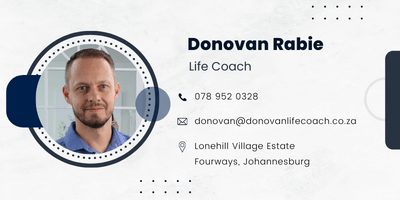
As a life coach, your primary objective is to help your clients achieve their goals and overcome challenges. To do this, you need to provide feedback on their progress, behaviour and thought patterns. However, giving feedback can be a delicate process, especially if the client is sensitive or defensive.
When giving feedback, you want to avoid causing negative emotions that can make the client feel demotivated, discouraged, or defensive. Instead, you want to deliver your feedback in a way that helps the client learn, grow, and improve.
In this article, I will explore practical tips on how to give feedback to a life-coaching client without making them feel bad. I will cover the do’s and don’ts of giving feedback, common mistakes to avoid, and effective strategies to help your client embrace feedback and use it to their advantage.
Do’s and Don’ts of Giving Feedback
Before we dive into the specifics of giving feedback, it’s essential to understand the basic principles of effective feedback. Here are some dos and don’ts to keep in mind:
Do’s
Do provide feedback promptly: Feedback is most effective when it’s given as soon as possible after the behaviour or event you’re commenting on. Delaying feedback can reduce its impact and relevance.
Do focus on behaviour, not personality: When giving feedback, avoid making personal attacks or judgments. Instead, focus on specific behaviors or actions that the client can change or improve.
Do be specific and clear: Feedback should be specific, clear, and actionable. Avoid vague statements or generalizations that can be interpreted in different ways.
Do use “I” statements: Using “I” statements such as, “I noticed” or “I observed” can help you avoid sounding accusatory or judgmental. It also shows that you’re sharing your perspective, not imposing your opinion.
Do offer solutions or alternatives: Feedback is most useful when it comes to practical solutions or alternatives that the client can try. Avoid criticizing without offering constructive suggestions.
10 world-class mindset shifts that will…
~ Accelerate your success.
~ Bring out your inner genius.
~ Create a lasting impact on your happiness.
Price From: $11.49
Don’ts
Don’t make assumptions: Avoid assuming that you know what’s going on in the client’s mind or life. Always ask for clarification or context before giving feedback.
Don’t use absolutes or exaggerations: Words like “never,” “always,” or “completely” can make the client feel attacked or defensive. Stick to specific examples and avoid exaggerations.
Don’t ignore positive behaviour: Giving feedback doesn’t always mean pointing out flaws or mistakes. Acknowledging positive behaviour or progress can motivate the client to keep improving.
Don’t give feedback in public: Feedback should be given in private, preferably during a one-on-one coaching session. Public feedback can embarrass the client and damage their self-esteem.
Common Mistakes to Avoid
Giving feedback is a skill that requires practice and refinement. Here are some common mistakes that coaches make when providing feedback to clients:
1. Focusing only on the negative
One of the biggest mistakes coaches make is focusing solely on the client’s weaknesses or areas for improvement. While it’s essential to identify areas that need work, it’s also crucial to acknowledge the client’s strengths and achievements. This helps build the client’s confidence and motivates them to keep striving for success.
2. Being too vague or general
Feedback that is too vague or general can be confusing and ineffective. For instance, saying, “You need to be more assertive” is not specific enough to help the client understand what they need to do differently. Instead, try to provide specific examples of when and how the client could have been more assertive. This helps the client understand what they need to work on and how they can improve.
3. Failing to listen
Effective feedback requires active listening. If you don’t listen to your client’s perspective and concerns, your feedback may miss the mark or come across as insensitive. Always take the time to listen to your client’s feedback and respond with empathy and understanding.
4. Using judgmental language
Using judgmental language such as “bad,” “wrong,” or “inadequate” can make the client feel defensive and criticized. Instead, use neutral language that focuses on the behaviour, not the person. For example, instead of saying, “You’re not good at managing your time,” say, “I noticed that you missed a deadline last week. What can we do differently to ensure that you meet your deadlines?“
5. Providing too much feedback
While feedback is essential, too much feedback can be overwhelming and demotivating. Instead of bombarding your client with feedback, focus on one or two key areas that the client needs to work on. This helps the client prioritize their efforts and avoid feeling overwhelmed.
Effective Strategies for Giving Feedback
Now that you know what to avoid when giving feedback, let’s explore some effective strategies that can help you deliver feedback in a way that motivates and empowers your client.
1. Use the “sandwich” technique
The sandwich technique is a classic feedback strategy that involves “sandwiching” negative feedback with positive feedback. For instance, you could start by acknowledging the client’s progress or strengths, then offer negative feedback, and end with some positive feedback or encouragement.
Here’s an example:
Positive feedback: “I’ve noticed that you’ve been putting a lot of effort into your work lately, and it’s paying off. Your productivity has improved, and you’re meeting your goals more consistently.“
Negative feedback: “However, I noticed that you tend to get distracted by your phone during work hours, which can reduce your focus and productivity.“
Positive feedback/encouragement: “I believe that if you can limit your phone use during work hours, you’ll be able to achieve even more and take your performance to the next level.“
The sandwich technique can be an effective way to deliver negative feedback without overwhelming or discouraging the client.
2. Use “what” and “how” questions
Asking “what” and “how” questions can help you provide feedback in a way that encourages the client to reflect and come up with solutions. For example, instead of saying, “You need to be more organized,” you could ask, “What strategies do you think you could use to become more organized?” This puts the client in the driver’s seat and empowers them to come up with their solutions.
3. Use non-verbal cues
Non-verbal cues such as nodding, smiling, and maintaining eye contact can help you communicate support and encouragement to the client. They also help you gauge the client’s reactions and adjust your feedback accordingly.
4. Use the “compliment sandwich”
Similar to the sandwich technique, the compliment sandwich involves sandwiching negative feedback between two positive statements. However, in this case, both the opening and closing statements are compliments or positive feedback. For example:
Positive feedback: “You’re doing an excellent job of meeting your goals and staying on track.“
Negative feedback: “I noticed that you tend to interrupt others during meetings, which can be distracting and make it difficult for others to contribute.“
- Positive feedback/encouragement: “I appreciate your enthusiasm and engagement during meetings. If you can work on limiting interruptions, you’ll be even more effective in collaborating with others.“
The compliment sandwich can be a gentler way to deliver negative feedback while still providing the client with actionable steps for improvement.
5. Focus on the behaviour, not the person
As mentioned earlier, it’s important to focus on the behaviour, not the person when giving feedback. Instead of criticizing the client, provide feedback that focuses on specific behaviours that need improvement. For instance, instead of saying, “You’re lazy,” say, “I noticed that you’ve missed a few deadlines recently. Is there anything I can do to help you prioritize your tasks better?“
Frequently Asked Questions (FAQs)
Q: What if the client gets defensive or upset when I give them feedback?
A: It’s important to approach feedback with empathy and understanding. If the client becomes defensive or upset, try to listen to their concerns and provide reassurance that your feedback is intended to help them grow and improve. Avoid getting defensive or argumentative, and focus on finding a solution together.
Q: How often should I give feedback to my life coaching client?
A: The frequency of feedback depends on the client’s needs and goals. Some clients may benefit from frequent feedback, while others may prefer to receive feedback on a less frequent basis. It’s important to discuss the client’s preferences and adjust your coaching style accordingly.
Q: What if the client doesn’t want to receive feedback?
A: Some clients may be resistant to feedback, either due to fear or a lack of trust. In this case, it’s important to explore the client’s concerns and address them with empathy and understanding. If the client is still resistant, it may be necessary to adjust your coaching approach or explore other strategies for helping the client achieve their goals.
Conclusion
Giving feedback to a life-coaching client is an essential part of the coaching process. When delivered effectively, feedback can help the client grow and develop new skills and behaviours. However, it’s important to approach feedback with empathy, understanding, and a focus on specific behaviours that need improvement. By avoiding common feedback mistakes and using effective strategies for delivering feedback, you can help your clients achieve their goals and reach their full potential.

Interested in what I do?

Donovan – Life Coach – 078 952 0328








